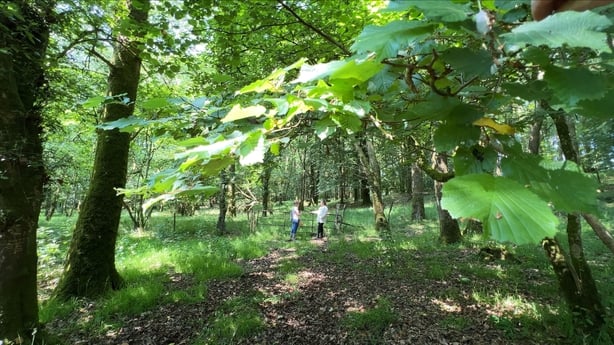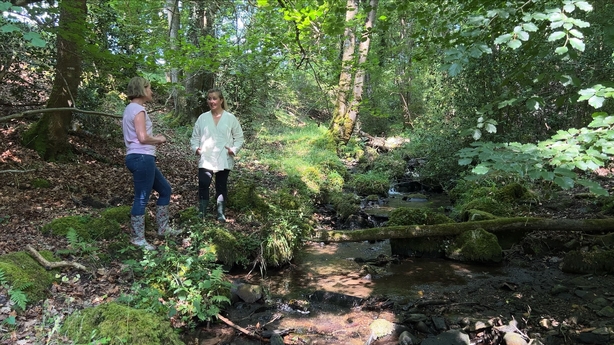This article and video were amended on 8 September 2023. Earlier versions included a quote from Martha O'Hagan which made an incorrect reference to grants and premiums for Sitka spruce. Full details of the latest forestry grants and schemes can be found on gov.ie
Ireland may be famous for its forty shades of green, but surprisingly little comes from forest.
Forest cover here is estimated to be 11% - one of the lowest in Europe, where the average is around 35%.
Of that 11%, the vast majority is planted with fast-growing, non-native conifers like the Sitka spruce, grown for timber.
Just 2% is native woodland.
The Government's €1.3 billion forestry strategy, described as "the best-funded, most environmentally friendly programme in the history of the State", aims to increase forest cover as part of Ireland's Climate Action Plan.
The programme provides for increased premiums for planting a 'broad range' of trees, with native, mixed broadleaf forests prioritised 'at a much greater scale than ever before'.
However, some critics are not convinced.
Writing in the Irish Examiner newspaper last month, farmer and author Eoghan Daltun said the policy needed a "radical rethink", as it would only result in more "industrial plantation deadzones... where life is driven out for maximum productivity and profit".
Clearly, achieving a balance between having enough fast-growing conifers for construction timber, while also bringing back native woodlands to enhance biodiversity, isn't going to be easy.

Dr Martha O’Hagan, Associate Professor at the Trinity Business School, is working on a solution.
It is a project to develop a measure of 'true value' for Irish woodlands, which she says would ultimately lead to better designed subsidies.
"If you wanted to plant a broadleaf forest, to keep a wood for hundreds of years and not cut down the trees for timber, you get paid for 20 years and after that you receive nothing," she explained.
Dr O'Hagan describes her project as a kind of "scorecard for woodlands", which marks the different types of ecosystem services they provide.
"The simplest way to think about it is like the game 'Top Trumps'. We have different species of trees, at different points in their life cycle, in different soils. So they're the different categories. And then we are scoring them according to five different attributes: carbon capture, impact on water and soil quality, value as timber, or as amenities, and their ability to support a variety of other plants and wildlife.
"In creating that scorecard what we ultimately want to do is to assign a financial value to each of those attributes for the different types of woodlands."

Dr O'Hagan's project appeals to people like solicitor Siobhan Moloney.
Earlier this year, Ms Moloney bought a native forest in Aughrim, Co Wicklow, with the aim of managing it and preserving it for future generations.
"I never thought I would be able to buy an established forest like this," she explained. "I originally thought I would have to buy a greenfield site and afforest it under some of the existing schemes.
"The history of this forest goes back beyond living memory. I've found evidence of it on maps from the late 1700s.
"I think I'm preserving something that's beautiful and of value - not just to me and my family, but to my neighbours, the community and the people of Ireland at large.
"I look at this as something that will extend for the remainder of my lifetime and well beyond it. It's a 150-year plan and a mammoth task. Some of the work that I will do here, I won't be able to see the benefits of in my lifetime.
"Martha's project is helpful and vital to support people like me and encourage initiatives like this. The benefits of a forest like this can't be quantified in terms of agricultural value. We need to encourage alternative viewpoints, different perspectives, looking at values of land according to different criteria."
Martha O'Hagan points out that "different tree species offer different benefits at different times."
She believes that if Ireland is to bring back long-term native woodlands, farmers and landowners need to be properly incentivised and financially rewarded to do so.
"I suppose we have mainly looked at woodlands either through parks for their amenity value, or through the Sitka spruce plantations for timber. But what about their carbon sequestration, or their water filtration? There's a public benefit to the ecosystem services that a forest produces, so why aren't landowners paid for as long as those ecosystem services accrue?"







